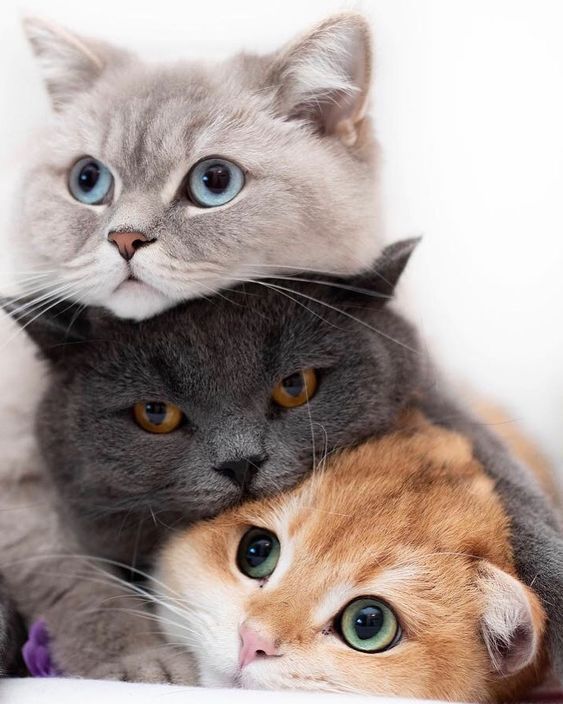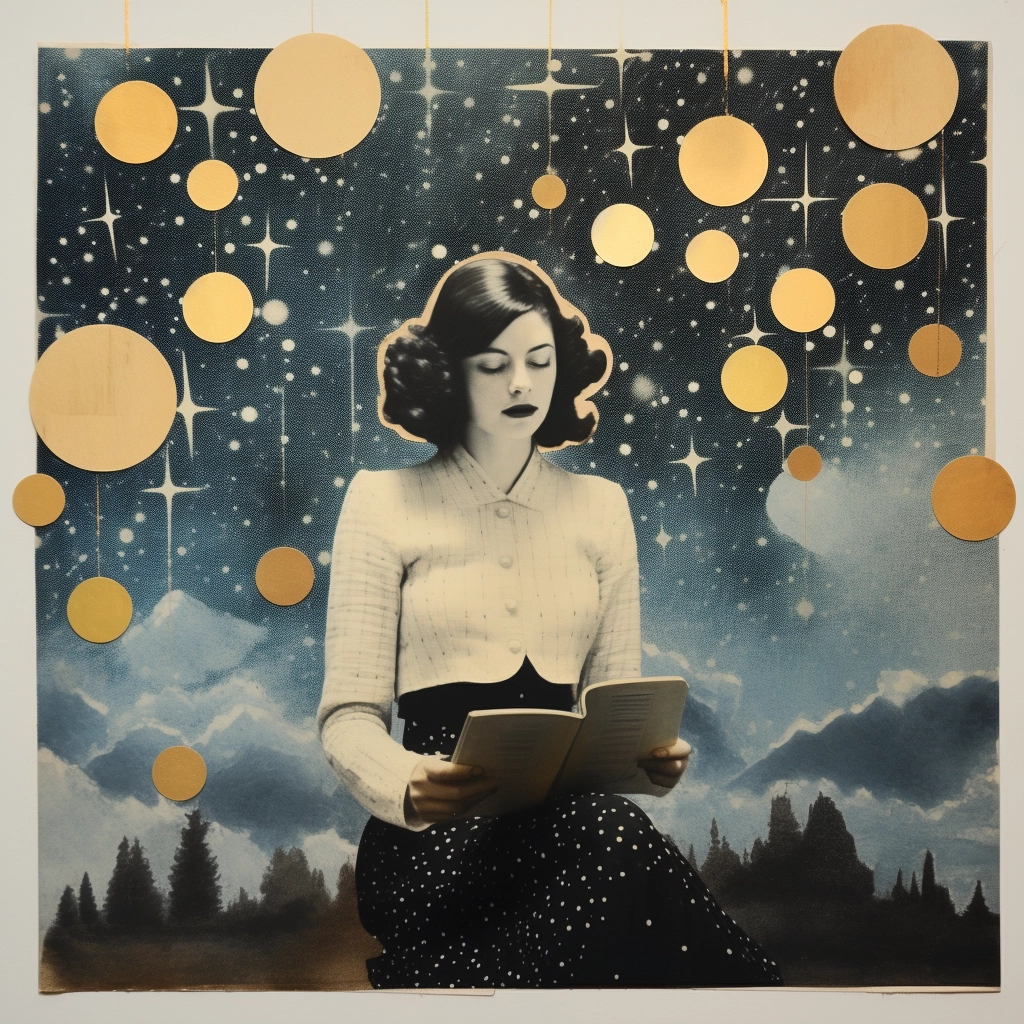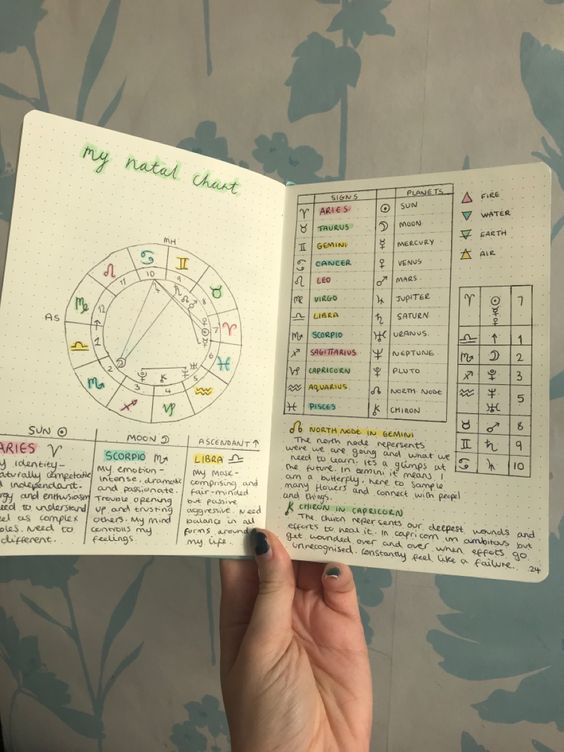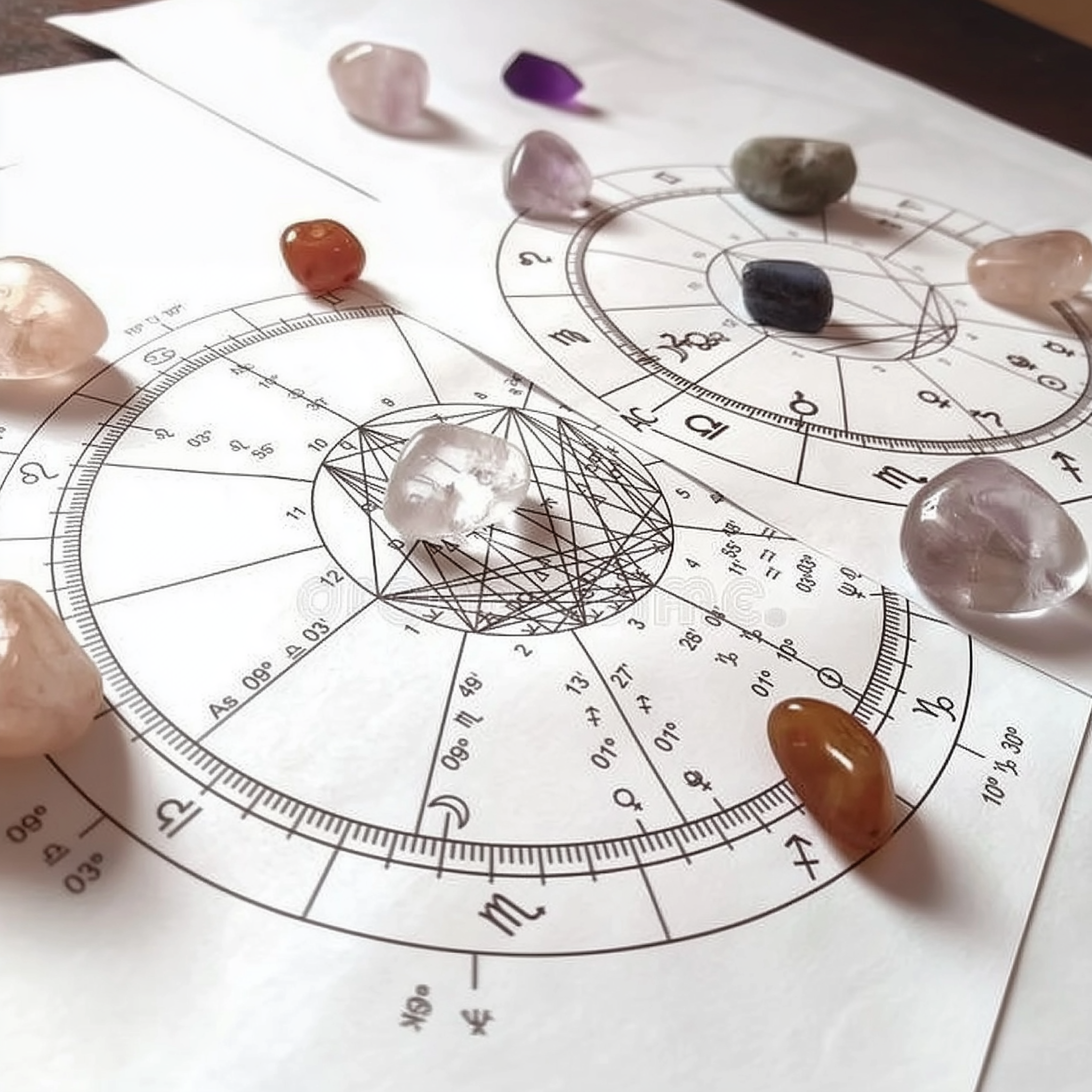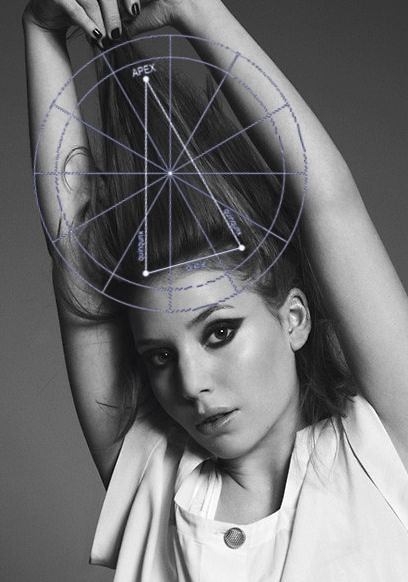 The Yod is often seen as a sign of destiny, a karmic aspect pattern, or even a spiritual calling. In astrology, it’s referred to as the “Finger of God.” It’s a special pattern formed when two planets are sextile to each other (60 degrees apart), and both are quincunx (150 degrees apart) to a third planet. This configuration creates a narrow triangle on the astrological chart, which is thought to point to a special life mission or talent that the individual possesses. The focal planet, the one that the other two point to, is considered to be of particular importance. But just because it’s called the “Finger of God” doesn’t mean you’re Moses coming down the mountain with tablets—though it might feel like it at times. The Yod asks for integration, for some kind of mystical alchemy between the planets involved. It’s an aspect of tension and adjustment, urging you to find a harmonious way to blend these often incompatible energies. The planet or point at the tip of the Yod—the apex—becomes the focal point. The sextile provides a helping hand to harmonize it. There’s an urgency, a pull, an almost magnetic draw toward something that demands your attention, and that’s the crux of it, really. The apex planet could represent a longing or a desire that sits at the core of your being. The buildup of energy around this point can be powerful. This urgency you feel, this longing for change or transformation, isn’t necessarily destiny; it’s in making a choice. The Yod creates tension, but also an opportunity—an invitation to step into your own power and consciously direct where that energy goes.
The Yod is often seen as a sign of destiny, a karmic aspect pattern, or even a spiritual calling. In astrology, it’s referred to as the “Finger of God.” It’s a special pattern formed when two planets are sextile to each other (60 degrees apart), and both are quincunx (150 degrees apart) to a third planet. This configuration creates a narrow triangle on the astrological chart, which is thought to point to a special life mission or talent that the individual possesses. The focal planet, the one that the other two point to, is considered to be of particular importance. But just because it’s called the “Finger of God” doesn’t mean you’re Moses coming down the mountain with tablets—though it might feel like it at times. The Yod asks for integration, for some kind of mystical alchemy between the planets involved. It’s an aspect of tension and adjustment, urging you to find a harmonious way to blend these often incompatible energies. The planet or point at the tip of the Yod—the apex—becomes the focal point. The sextile provides a helping hand to harmonize it. There’s an urgency, a pull, an almost magnetic draw toward something that demands your attention, and that’s the crux of it, really. The apex planet could represent a longing or a desire that sits at the core of your being. The buildup of energy around this point can be powerful. This urgency you feel, this longing for change or transformation, isn’t necessarily destiny; it’s in making a choice. The Yod creates tension, but also an opportunity—an invitation to step into your own power and consciously direct where that energy goes.
When a transiting planet makes contact with the apex of your Yod, it illuminates areas of your life that need attention or change. This activation can come like a bolt from the blue or a slow-burn realization, but either way, it often signifies a moment of potential growth or breakthrough. These are the moments when life shakes you by the shoulders and asks, “What are you going to do with this?” And sometimes, it’s not only the external circumstances that change. The real transformation happens internally. When these planets align and trigger that apex, they ask you to confront the intensity, to sit with the discomfort, to look squarely at whatever is begging for release or change. It’s about alchemy, really—the process of turning the base metal of experience into the gold of understanding, wisdom, and, ultimately, evolution.
The Yod reminds us that growth doesn’t always come wrapped in comfort. Often, it arrives in the form of tension, challenge, or a sudden detour down an uncharted path. So, while it might feel like a force outside of yourself is pushing you into the unknown, the truth is, it’s all within you—the potential, the power, the choice. Life will bring its share of unexpected surprises, crossroads, and trials, but how you respond is entirely up to you.
The Yod—the ménage à trois of astrological aspects, is a peculiar blend of harmony and discord. Liz Greene’s uses an analogy for the the Yod and compares it to a miniature family. Together, they create a dynamic that can either foster growth or devolve into conflict, depending on how well their energies are understood. The sextile aspect, often seen as the peacemaker in this arrangement, offers a channel for collaboration. When harnessed effectively, the sextile’s influence can transform the Yod, turning challenges into opportunities and tension into creative fuel. But let’s not forget the shadow side, as pointed out by the “Zodiac Master.” He uses the term “neurotic planetary arrangement,” which certainly paints a vivid picture. At first glance, the Yod might appear docile and obliging, eager to please. Yet beneath that submissive exterior, there’s a complexity, a simmering restlessness that refuses to stay quiet for long. If the tensions between the planets are left unchecked or unexamined, they can manifest as anxiety, inner turmoil, or even external conflicts that seem to come out of nowhere.
The Yod Aspect Pattern
The enigmatic nature of the Yod in astrology has led to various interpretations and debates among astrologers. Joan Kellog strongly disagreed with Alice Bailey’s interpretation of them.
The Yod, with its complex geometry and intense energy, is one of those aspects that lends itself to a multitude of interpretations, each with its own merit and perspective. Joan Kellog and Alice Bailey are two such astrologers whose differing takes on the Yod illustrate just how diverse—and at times, divisive—the astrological landscape can be. Joan Kellog, who penned an entire book on the Yod, approached it with a more psychological and archetypal lens. Her focus was likely on how the Yod manifests in the psyche, the inner conflicts and transformative opportunities it presents, and how it can be handled in the context of one’s personal growth and evolution. She saw the Yod as a kind of internal puzzle, a configuration that calls for a deeper understanding of the self, a balance of conflicting energies, and the integration of disparate parts of the personality. Now, Alice Bailey, ever the theosophist and esoteric thinker, would have viewed the Yod through a broader spiritual and cosmic framework. Her interpretation likely involved the Yod as a kind of spiritual directive, a sign of higher destiny or divine intervention, something pointing the way toward a greater purpose. For Bailey, astrology wasn’t just about understanding the individual in isolation; it was about recognizing the individual’s place within a larger, divine plan, unfolding across lifetimes. The Yod, in her view, might be seen as a calling or a karmic signature, an indication of where one’s spiritual work or evolution might lie. And here we have two fascinating perspectives: one rooted in psychological growth and inner transformation, the other leaning towards a broader spiritual reading. Both are compelling, both hold elements of truth, yet they offer distinctly different ways of understanding the Yod’s influence in a natal chart. This is where the challenge of astrology lies—it’s not a science with strict, immutable rules but an art, a living, breathing system that shifts and evolves with the times. Astrology is a vast ocean of symbols, meanings, and possibilities. The Yod, being as enigmatic as it is, will naturally attract a wide range of interpretations. Astrology, at its heart, is a tool for self-awareness and spiritual exploration. It’s less about finding a definitive answer and more about engaging with the mystery, playing with the symbols, and discovering your own interpretation.
Joan Kellog’s take on the Yod elevates it to something much more spiritual—a signpost, if you will, pointing the way toward a unique destiny or purpose. Within its geometry lies a riddle that the individual must solve, a series of karmic clues that hint at the work one must do in this lifetime. To her, the Yod signals that there’s something special you are here to accomplish, a specific conundrum to unravel, or perhaps a task that only you can fulfill. The term “Finger of God” captures this essence perfectly—there’s something a bit divine about the Yod, something that points to a higher calling. The Yod often shows up in the charts of people who feel a strong sense of mission or purpose, a calling that may not always be clear but is deeply felt.
Yet, Kellog also speaks to the complexity of this aspect—it’s the idea that the Yod is a key to unlocking something important, but not without effort, not without conscious awareness. The planets involved often bring together energies that are disparate or at odds, requiring you to integrate seemingly opposing qualities or resolve internal contradictions. You might have a deep well of potential, a special talent, or a life mission, but it comes with lessons attached—lessons that are often about balance, acceptance, and transformation. The planet at the apex, that focal point of the Yod, represents where this calling or challenge manifests most strongly. It’s where your efforts are concentrated, where the mystery resides, and where the transformation happens if you dare to engage with it fully.
The apex planet of the Yod is a pressure point, where life’s trials and opportunities converge. This highest planet can symbolize trying experiences, a place where the tensions of the Yod crystallize into a demand for growth, change, or resolution. This apex planet is the lightning rod, the focal point where the potential for change and development is most concentrated. It’s where you might feel the greatest tension, but also where the most powerful breakthroughs can occur.
While the Yod certainly has its reputation for destiny and purpose, we must remember that it’s just one piece of the puzzle. Astrology, like life, resists oversimplification. If you focus too much on the Yod, you might miss the subtle harmonies and counterpoints created by the rest of the chart. For some, the Yod may represent a special talent or a karmic mission. For others, it may simply be one of many elements shaping their life’s journey, no more or less significant than any other.
What makes the Yod so intriguing is precisely this ambiguity, this sense that it holds a secret or a key—but what that secret is, or what door it unlocks, is not immediately clear. The Yod invites introspection and self-exploration. Does it represent a particular struggle or challenge that calls for attention? Or is it simply another thread in the fabric of your being, no more special than any other? The divergent interpretations from astrologers, the debates, the disagreements—all of these add to the Yod’s mystique and remind us that astrology is as much an art as it is a science. If you’ve got a Yod in your chart, treat it like a fascinating riddle. Explore its meaning with an open mind and a discerning heart, aware that while it may hold something special for you, it is only part of your life.
Let’s break down its components again, shall we? The two inconjuncts (or quincunxes) form the base of the Yod, creating an uneasy alliance. Quincunxes are aspects that bring together planets or points that share little common ground—different elements, different modalities, and vastly different perspectives. They create a persistent itch that can’t quite be scratched, a feeling that something is just slightly off, urging you to adjust, adapt, and reconfigure your approach. In a Yod, these quincunxes create a sense of internal tension or unease, a subtle but continuous reminder that something needs to change or evolve. They force you to confront areas of life that seem unrelated, to bridge gaps that aren’t easily spanned, to find creative ways to bring together parts of yourself that feel in opposition.
The quincunxes compel you to step out of the comfort zone, where life might be smooth but perhaps unremarkable, and into the space of uncertainty where real growth happens. Meanwhile, the sextile aspect, that lovely little 60-degree angle, brings a touch of grace and ease to this otherwise challenging configuration. It represents an opportunity, a glimmer of cooperation amidst the discord. The sextile suggests that, while there may be tension and difficulty, there is also a potential for support and collaboration, a door that opens just when you need it most.
Yet, here’s where the paradox of the Yod comes into full bloom. Despite the opportunities presented by the sextile, the inconjuncts generate a tension that can feel like an internal tug-of-war. It’s as if you’re being pulled in two different directions at once while also being shown a way forward that requires bringing these conflicting forces together. The apex planet, that point of focus in the Yod, is the arena where all this dynamic energy converges. It’s where the pressure mounts, and where the challenge must be faced head-on. This apex planet feels the strain and demands a resolution. It calls for an answer, a way to channel the divergent energies into something productive, meaningful, and aligned. There’s often a sense of urgency with the Yod, a feeling that time is of the essence, that the stakes are high, and that something important is waiting to be realized.
Yet, with all this talk of destiny and purpose, it’s important to remember that the Yod doesn’t dictate a single outcome or force a singular fate upon you. It suggests a pattern, a potential, a path that invites exploration and conscious choice. It may present you with two paths that need converging and a choice to be made, but it also offers you the tools for creative problem-solving, the support for handling complicated situations, and the chance to grow into your fullest self. It’s less about fulfilling a predetermined fate and more about engaging with your life with awareness, curiosity, and courage. So, whether you interpret your Yod as a call to greatness, a spiritual mission, or simply one of many interesting aspects of your natal chart, remember that its true significance lies in how you choose to engage with it.
